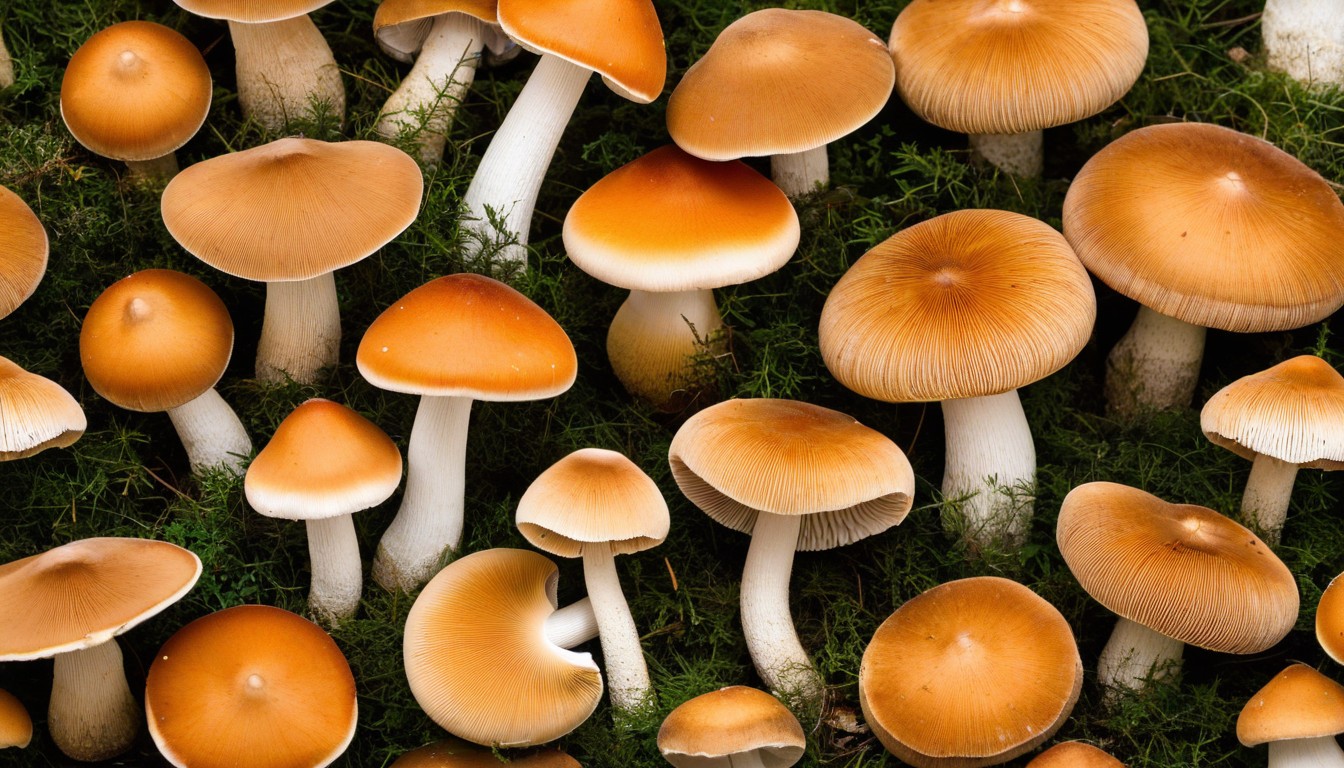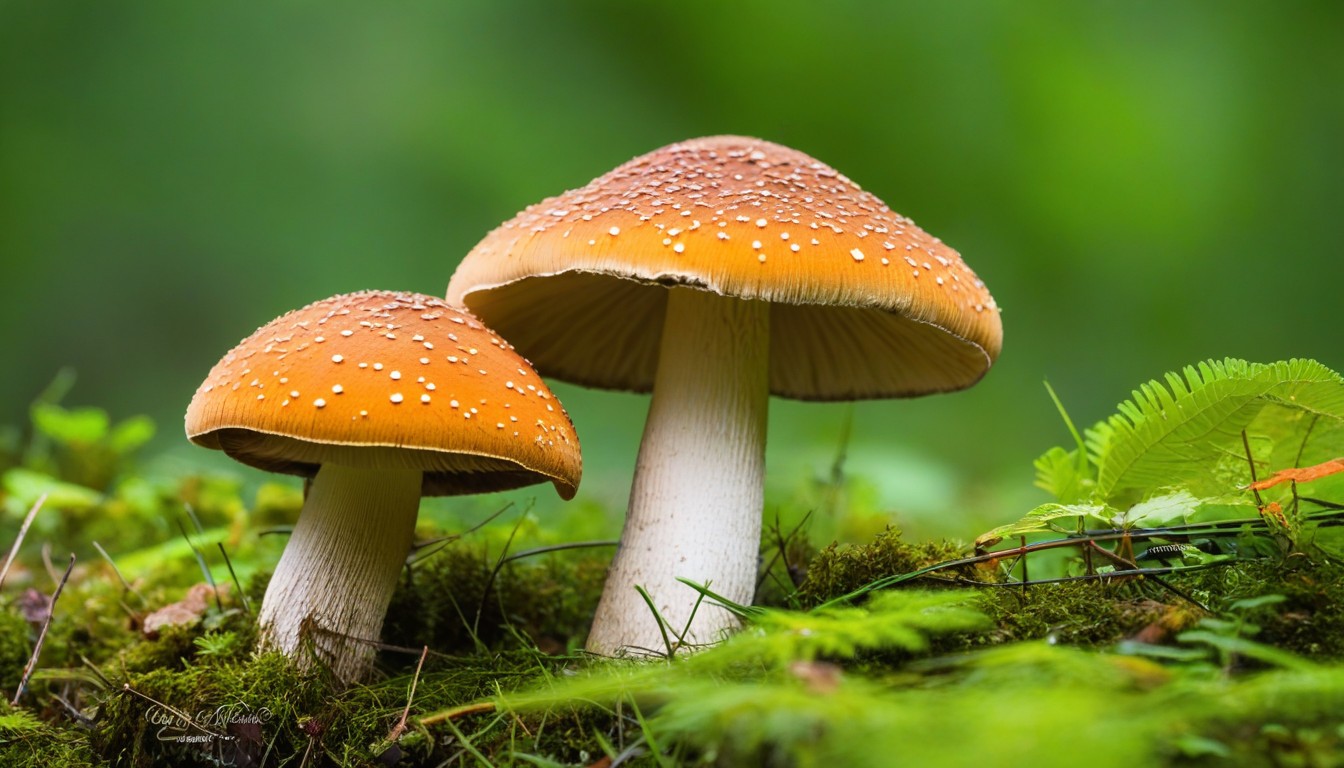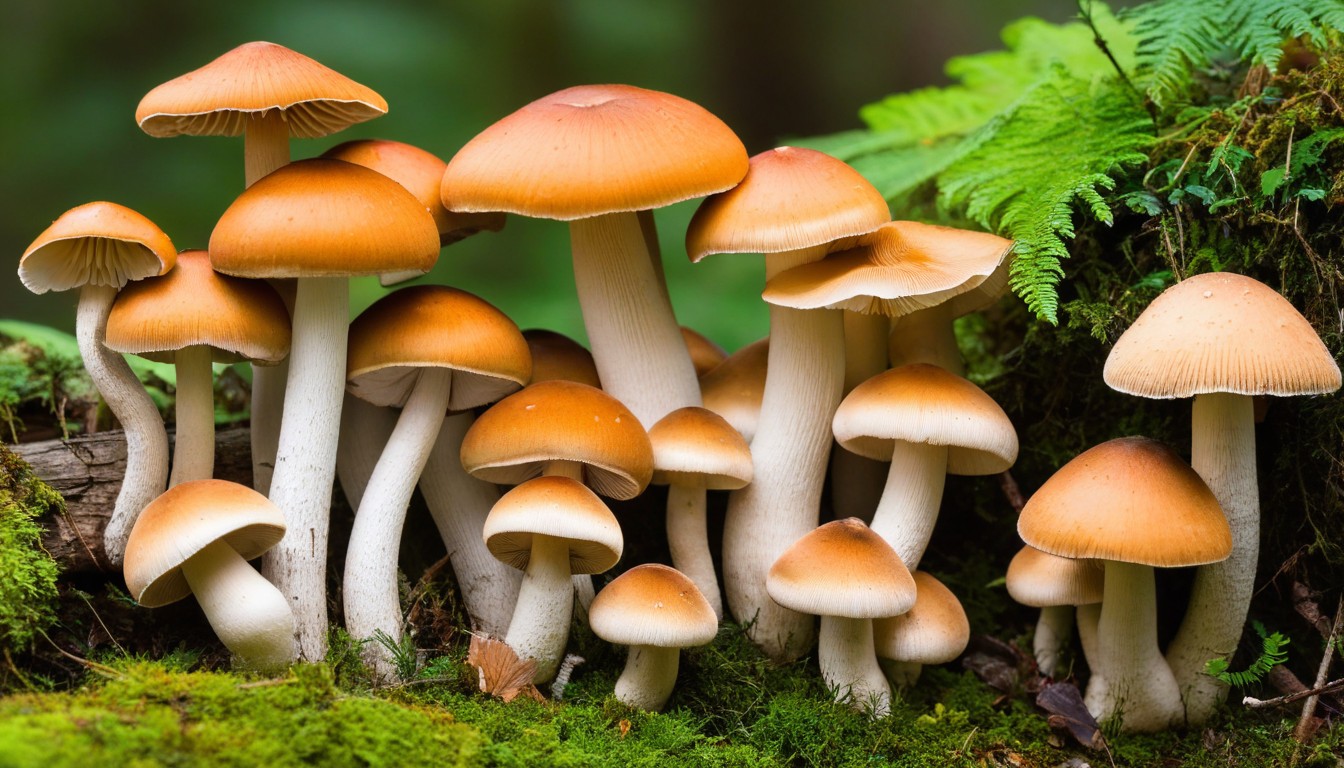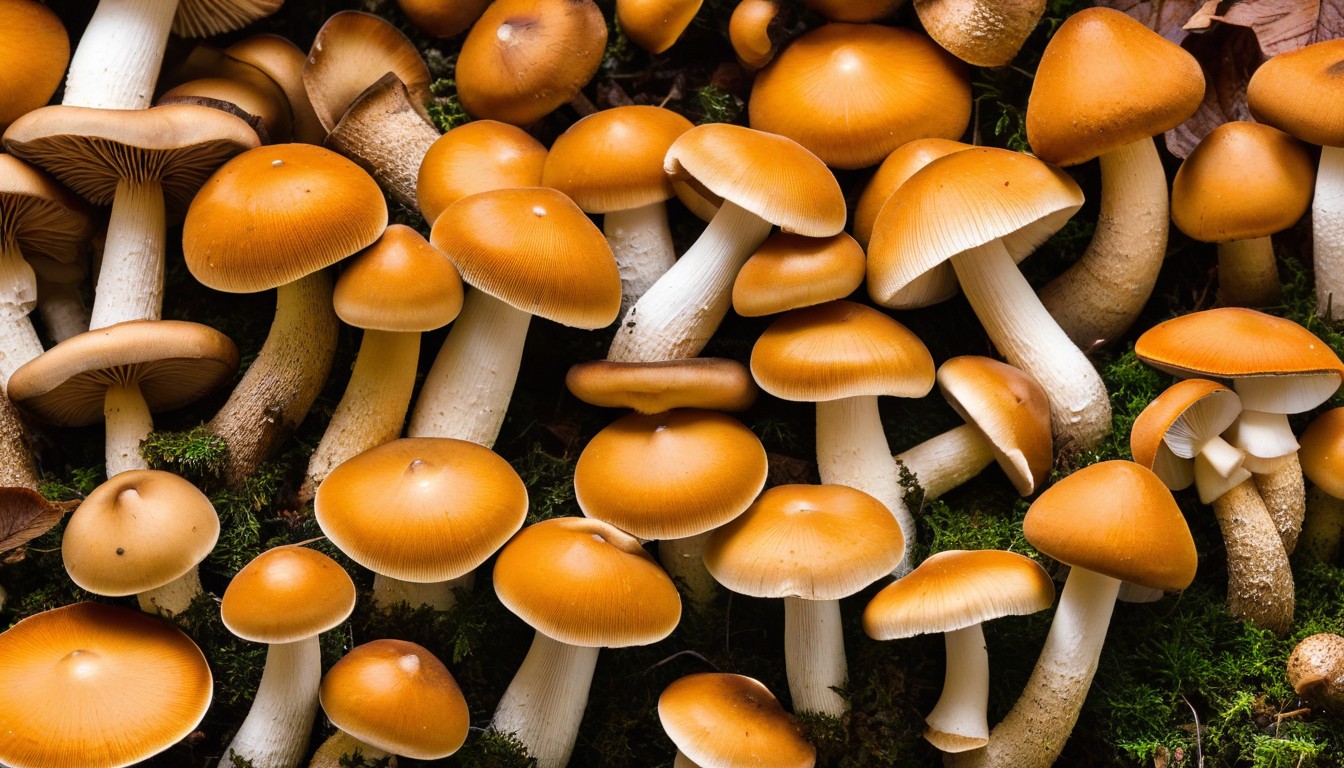Welcome to the fascinating world of edible wild mushrooms in Maine! This comprehensive guide will take you on a journey through the woodlands of this beautiful state, where a variety of mushrooms can be found. From the delectable Chanterelles to the versatile Hen of the Woods, there’s a mushroom for every taste bud to explore.
Key Takeaways
- Learn about the abundant variety of edible mushrooms in Maine
- Understand the benefits of foraging for edible mushrooms
- Acquire the proper foraging skills and techniques
- Stay safe by following essential mushroom identification and safety precautions
- Discover popular edible mushrooms found in Maine, their flavor profiles, and best harvesting seasons
Benefits of Foraging for Edible Mushrooms
Foraging for edible mushrooms offers numerous benefits beyond simply finding delicious ingredients for your recipes. Here are just a few of the advantages:
Connecting with Nature
Foraging for mushrooms provides an excellent opportunity to connect with nature and spend time outdoors. Exploring the woods in search of edible treasures can be a peaceful and meditative experience that allows you to escape the stresses of daily life and enjoy the beauty of the natural world.
Fresh and Healthy Ingredients
Foraged mushrooms are typically fresher and healthier than store-bought mushrooms. You can be sure that your ingredients are free from harmful pesticides and chemicals, and you have the added benefit of knowing where your food comes from.
Culinary Adventure
Foraging for edible mushrooms opens up a whole new culinary world. There are hundreds of varieties of edible mushrooms, each with their unique flavor and texture profiles. Incorporating foraged mushrooms into your cooking can add exciting new dimensions to your meals.
Cost Effective
Foraging for mushrooms can be a cost-effective way to add high-quality ingredients to your meals. While some specialty mushrooms can be expensive to purchase in stores, wild mushrooms can often be found for free in many wooded areas.
Overall, foraging for edible mushrooms can be a rewarding and satisfying activity for nature enthusiasts and foodies alike. Just be sure to follow proper foraging techniques, identify mushrooms correctly, and use caution when consuming wild mushrooms.
Acquiring the Proper Foraging Skills
Foraging for wild mushrooms can be a rewarding and enriching experience, but it comes with inherent risks. To minimize these risks and ensure a fruitful foraging experience, it is crucial to acquire the proper foraging skills and techniques.
First and foremost, it is essential to have a deep understanding of the types of mushrooms that grow in your area and what to look for when identifying them. Start by researching the most common mushrooms in your region and their characteristics.
Next, consider joining a local foraging group or attending a workshop hosted by a trained expert. Not only will you gain invaluable knowledge and hands-on experience, but you’ll also have access to a supportive community of mushroom enthusiasts who can provide additional tips and insights.
Some key foraging skills to keep in mind include:
- Using all of your senses to identify mushrooms
- Knowing the habitats and environments where different types of mushrooms grow
- Using appropriate tools and techniques to safely harvest mushrooms
- Understanding how to properly clean and store mushrooms
A solid grasp of these skills and techniques will enable you to navigate the woods with confidence and successfully identify edible mushrooms while avoiding poisonous ones.
Remember, foraging for wild mushrooms can be dangerous and should be done with caution. Always double-check your mushroom identifications before eating them.
In the next section, we’ll cover essential safety precautions and mushroom identification techniques to keep in mind while foraging.
Safety Precautions and Mushroom Identification

Foraging for wild mushrooms can be a rewarding experience, but it’s essential to take safety precautions to avoid any potential harm. Before setting out, research the area you plan to explore, as well as the mushrooms you hope to find. Many species of mushrooms are toxic, and some can be deadly, if ingested. Always consult a detailed field guide or experienced forager when identifying mushrooms, and never consume a mushroom unless you are completely certain of its safety.
When foraging, carry a small knife to help with the harvesting process and a basket for collecting your finds. Avoid using plastic bags or containers, as they can trap moisture and lead to spoilage. Instead, opt for a breathable basket that allows airflow.
Mushroom Identification
Knowing how to identify edible mushrooms is crucial to safe foraging. Each mushroom has unique characteristics that distinguish it from others, and these traits can vary significantly between species. Here are some key edible mushroom characteristics to look for:
|
Mushroom |
Cap |
Gills or Pores |
Stem |
|---|---|---|---|
|
Chanterelle |
Trumpet-shaped, wavy, smooth, and golden-yellow or orange |
Blunt, rugged, and attached to the stem |
Thick, firm, and same color as cap, with deep ridges |
|
Hen of the Woods |
Ruffled, gray-brown, and mushroom-shaped |
Soft, forked, and running down the base |
Creamy or light brown, thick with no ring, and appearing in layers or branching out |
|
Black Trumpet |
Trumpet-shaped, wavy, smooth, and black or brown |
Empty, delicate, and thinner than the cap |
Thin, hollow, and same color as cap |
|
Morel |
Honeycomb-shaped, with a spongy texture, and light brown or yellowish |
Empty, deeply ridged, and attached to the stem |
Short, thick, and white or light brown |
Use these characteristics as a guide, but never rely solely on appearance. To confirm your identification, cross-reference your findings with several sources of information.
Safety Precautions
Here are some essential safety precautions to follow when foraging for edible mushrooms:
- Never consume a mushroom unless you are completely certain of its safety.
- Do not collect mushrooms from polluted, contaminated, or high-traffic areas.
- Wash your hands thoroughly before and after handling mushrooms, as well as any harvesting equipment.
- Carry a cell phone or other communication device. Stay in contact with friends or family members, letting them know where you are and when you plan to return.
By following these guidelines, you can enjoy a safe and fulfilling foraging experience. Remember, safety should always be your top priority when foraging for wild mushrooms.
Popular Edible Mushrooms in Maine

If you’re planning a foraging trip in Maine, these mushrooms are a must-try. From their unique flavors to their nutritional benefits, each one is a true delight. Take a look at our comprehensive guide to some of the most popular edible mushrooms in Maine.
|
Mushroom Name |
Flavor Profile |
Preferred Habitat |
Best Harvesting Season |
|---|---|---|---|
|
Chanterelles |
Sweet, slightly nutty |
Woodlands, near deciduous trees |
Late June to early September |
|
Hen of the Woods |
Rich, earthy |
At the base of oak and maple trees |
September to November |
|
Morels |
Meaty, nutty |
Forests, near conifers and hardwoods |
April to May |
|
Black Trumpet |
Sweet, rich |
Forests, near hardwoods and conifers |
Summer to early fall |
|
Sweet, seafood-like |
Forests, near conifers and hardwoods |
July to September | |
|
Boletus Edulis |
Meaty, nutty |
Pine and deciduous forests |
August to October |
Note: Make sure to use proper foraging techniques and safety precautions when hunting for these mushrooms. Always be sure of the identification before consuming them.
Now that you have a better understanding of the popular edible mushrooms in Maine, it’s time to plan your next foraging adventure and taste for yourself why they are so highly beloved.
Harvesting and Preparing Edible Wild Mushrooms

After successfully identifying your desired mushrooms, it’s time to harvest and prepare them for consumption. When harvesting, be sure to use proper techniques to avoid damaging the delicate mushroom caps. A sharp knife should be used to cut the stem close to the ground, leaving no trace behind.
It is essential to clean the mushrooms thoroughly to remove any dirt or insects. A soft brush or damp cloth can be used to gently wipe away any debris. Avoid soaking the mushrooms in water as it can compromise their texture and flavor.
When preparing for cooking, it’s essential to slice the mushrooms carefully and uniformly for even cooking. Some mushroom varieties need to be cooked longer than others. For instance, shiitake mushrooms have a tough stem and require longer cooking times than chanterelles.
When storing edible mushrooms, it’s best to use a paper bag or wrap them in a damp towel. Avoid storing mushrooms in plastic bags, as they can become slimy and spoil quickly.
Culinary Delights: Recipes to Savor
After an exciting foraging journey, cooking and enjoying your bounty is the perfect way to savor your experience. Edible mushrooms offer a variety of unique and delightful flavors, making them a favorite ingredient in numerous recipes. From soups and stews to salads and pasta dishes, the culinary uses of mushrooms are endless.
Creamy Mushroom and Spinach Pasta
This deliciously creamy pasta dish showcases the umami flavor of mushrooms and the earthiness of spinach. Start by cooking your desired pasta until al dente. In a separate pan, sauté sliced mushrooms and minced garlic until the mushrooms have released their water and turned golden brown. Add a handful of spinach and cook for a few minutes until wilted. In a separate pan, heat heavy cream and Parmesan cheese until the cheese melts and the sauce thickens. Mix the pasta and sauce with the mushroom and spinach mixture and serve with shaved Parmesan on top.
Mushroom and Goat Cheese Tart
This savory tart is the perfect appetizer for mushroom lovers. Start by preheating your oven to 375°F. Roll out store-bought or homemade puff pastry and place it into a tart pan. Blind bake the pastry (with weights to prevent puffing) for 15 minutes. In a separate pan, sauté sliced mushrooms and shallots until they are cooked through. Pour the mushroom mixture onto the blind-baked pastry. Beat goat cheese with heavy cream and eggs and pour over the mushroom mixture. Bake for 25-30 minutes until the filling is set.
Wild Mushroom and Truffle Risotto
This creamy and decadent risotto is a showstopper dish. To begin, heat chicken broth in a separate pan and keep it warm. In a separate pan, sauté diced onion, minced garlic, and sliced mushrooms until the mushrooms are golden brown. Add Arborio rice and cook until it is toasted. Add white wine and cook until the liquid is absorbed. Add hot chicken broth, one ladle at a time, stirring constantly until the liquid is absorbed. Continue adding broth and stirring until the rice is cooked al dente. Stir in truffle oil, butter, and Parmesan cheese and serve hot.
“The earthiness and richness of mushrooms make them a versatile ingredient that adds depth and complexity to various dishes.”
Whether you prefer a simple and classic preparation or a creative and experimental dish, mushrooms offer endless culinary possibilities. Experiment with your favorite mushroom varieties and showcase their unique flavors and textures in your dishes.
Ethical Foraging Practices and Environmental Considerations

When foraging for edible mushrooms, responsible and ethical practices are essential to ensure the sustainability of our natural resources.
Firstly, it’s important to respect the delicate ecosystems that mushrooms inhabit. Avoid damaging the environment by staying on designated trails while foraging, as well as refraining from littering and disrupting the natural habitat.
Secondly, be mindful of the impact you have on the mushroom population. Only pick the mushrooms you need and ensure that you leave enough spores behind for future generations of mushrooms to grow. Consider the rarity of the species and if the mushroom is rare, leave it to grow and preserve the species.
Lastly, keep in mind the legality of foraging in particular areas. Some locations require permits or have limitations on foraging, so do your research before heading out foraging. It should be noted that wild mushroom foraging in national parks and other protected areas may be restricted as it goes against park regulations.
In conclusion, ethical foraging not only ensures the sustainability of our natural resources, but also keeps the forests healthy and full of life. By being responsible foragers and considering the environmental impact, we can ensure that wild mushrooms can be enjoyed for generations to come.
Conclusion
In conclusion, foraging for edible wild mushrooms in Maine is a rewarding and exciting experience that offers a deep connection with nature and a variety of culinary delights. However, it is essential to practice proper foraging skills and safety precautions, as well as ethical and environmentally-conscious practices to ensure the sustainability of our natural resources and the delicate ecosystems they inhabit.
So whether you’re an avid mushroom enthusiast or a curious beginner, grab your basket, put on your hiking boots, and venture into the woods of Maine to discover the hidden treasures that nature has to offer. With this comprehensive guide, you can confidently identify and harvest a variety of edible wild mushrooms and create delicious dishes that will satisfy your taste buds and nourish your body.
Happy foraging!
FAQ
What are edible wild mushrooms?
Edible wild mushrooms are varieties of mushrooms that are safe for consumption and have culinary value. They can be foraged in the wild and used in various dishes.
Are all wild mushrooms in Maine edible?
No, not all wild mushrooms in Maine are edible. Some mushrooms can be poisonous or inedible, so it is crucial to have proper knowledge and skills to identify the edible ones.
How can I learn to identify edible mushrooms?
Acquiring the proper foraging skills is essential to identify edible mushrooms. You can attend workshops, consult field guides, or learn from experienced foragers to gain the knowledge needed for safe mushroom identification.
What precautions should I take while foraging for wild mushrooms?
Safety is vital when foraging for wild mushrooms. Make sure to use proper mushroom identification techniques, only consume mushrooms you are confident are edible, and be aware of any poisonous look-alike species. Additionally, it’s important to forage in areas free from pollution and follow ethical foraging practices.
Can you suggest some popular edible mushrooms found in Maine?
Some popular edible mushrooms found in Maine include Chanterelles, Morels, Lobster Mushrooms, Hen of the Woods, and Chicken of the Woods. These mushrooms have unique flavors and textures and can be used in various culinary preparations.
How do I harvest and prepare edible wild mushrooms?
Harvesting edible wild mushrooms requires careful techniques to avoid damaging the fungi and their habitats. Once harvested, it’s important to clean them properly and remove any dirt or debris. Cooking methods vary depending on the mushroom variety, but sautéing, grilling, and incorporating them into soups or stews are common preparation methods.
Can you provide some recipes using edible wild mushrooms?
Certainly! Here are a few delicious recipes to savor the flavors of edible wild mushrooms: Mushroom Risotto, Grilled Portobello Mushroom Burgers, Creamy Mushroom Soup, and Stuffed Morel Mushrooms. These recipes will showcase the unique tastes and textures of wild mushrooms.
What are ethical foraging practices?
Ethical foraging practices involve respecting the environment, ecosystems, and mushroom populations. It includes not over-harvesting, leaving some mushrooms behind for reproduction, and avoiding damage to the natural habitat. Foragers should also follow regulations and obtain any necessary permits for foraging in protected areas.
Is foraging for edible mushrooms legal in Maine?
Foraging for edible mushrooms is typically legal in Maine for personal consumption. However, it’s important to check local regulations and obtain any required permits if foraging in protected areas or commercial quantities.

